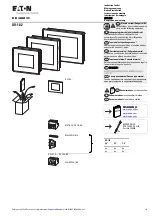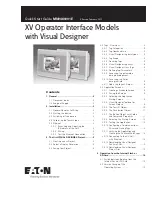
31
TS9000/TS9050 TouchStar Systems User Manual
Programming Touch-based Applications
The following information is provided to impart an overview of
how touch-based applications are structured. For specific details
on programming touch-based applications, please refer to the
programming manuals supplied with your TouchStar system –
Touchscreen Driver for DOS
and
Touchscreen Driver for Windows
.
An on-line help file is available directly in both
Windows 95
and
Windows NT
. Press the help key for the appropriate help file.
• General Functions and Guidelines
The TouchStar is designed and configured for touch-based
applications, where the video screen displays graphical
icons whose corresponding function is activated when
touched by a user. Touch-based applications can be divided
into two different categories:
• Graphical User Interface (GUI) applications, based on
a GUI operating system, such as Windows
• DOS-based applications
For GUI applications, a “mouse-like” touch driver is in-
stalled allowing standard applications to be executed.
However, for optimum ease of use, applications should:
• use only one button
• avoid double-clicks whenever possible
• keep touch targets large (for example, scroll bars are
very difficult to use)
With these provisions, applications can be developed using
standard tools and practices including Visual C++, Visual
Basic, etc.
Touch-based applications are composed of three parts – the
main application program, a touch library, and a graphics
library. Each of these is described below.
• Main Application Program
The main application program must perform the functions
of system initialization, enabling of touch targets, process-
ing of touch input data, and providing feedback to the user.
During system initialization, the program initializes the
system hardware, establishes a communication path to the
touch system, checks the touch system status, and converts
BASIC OPERATION - 3
















































